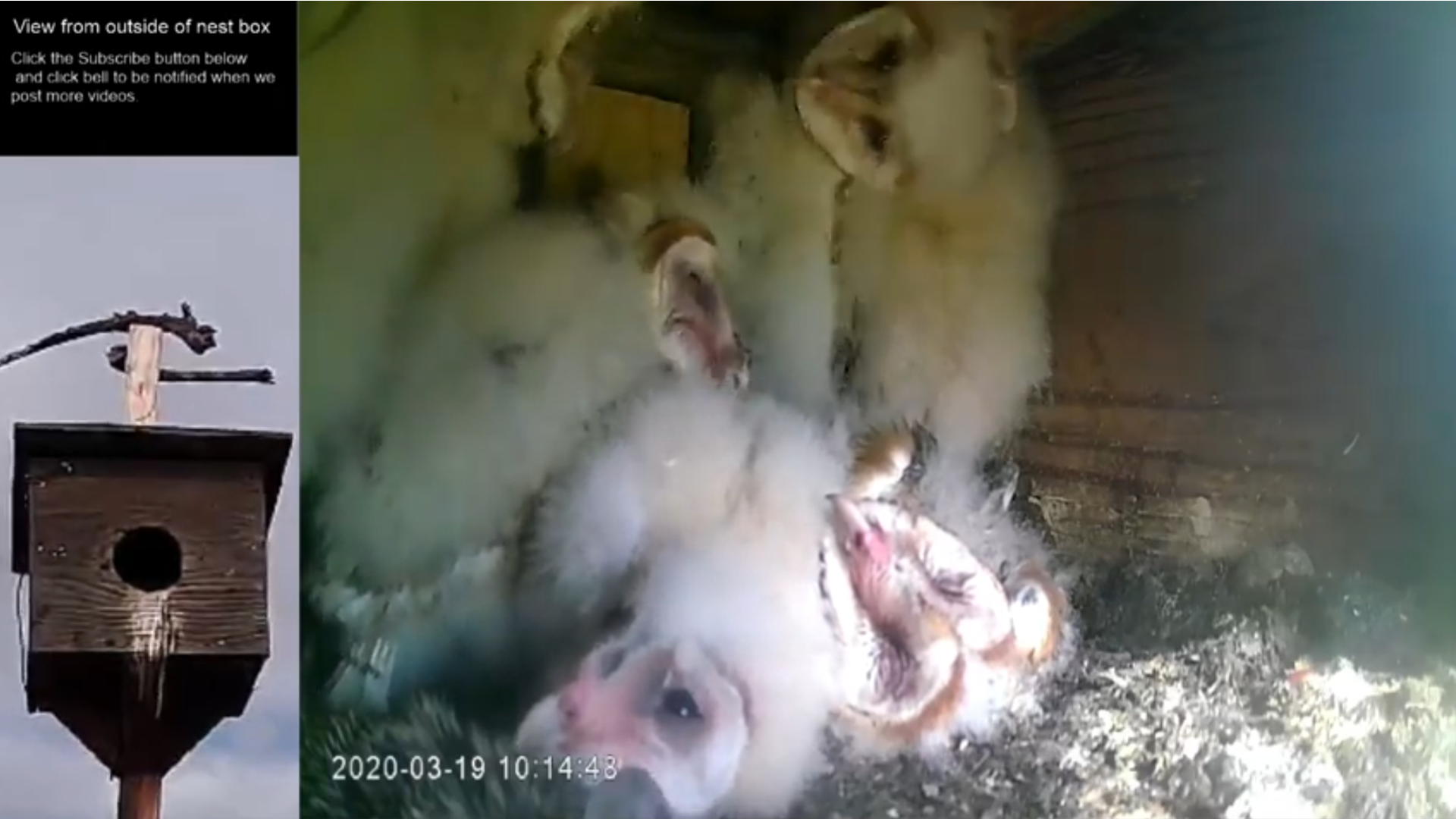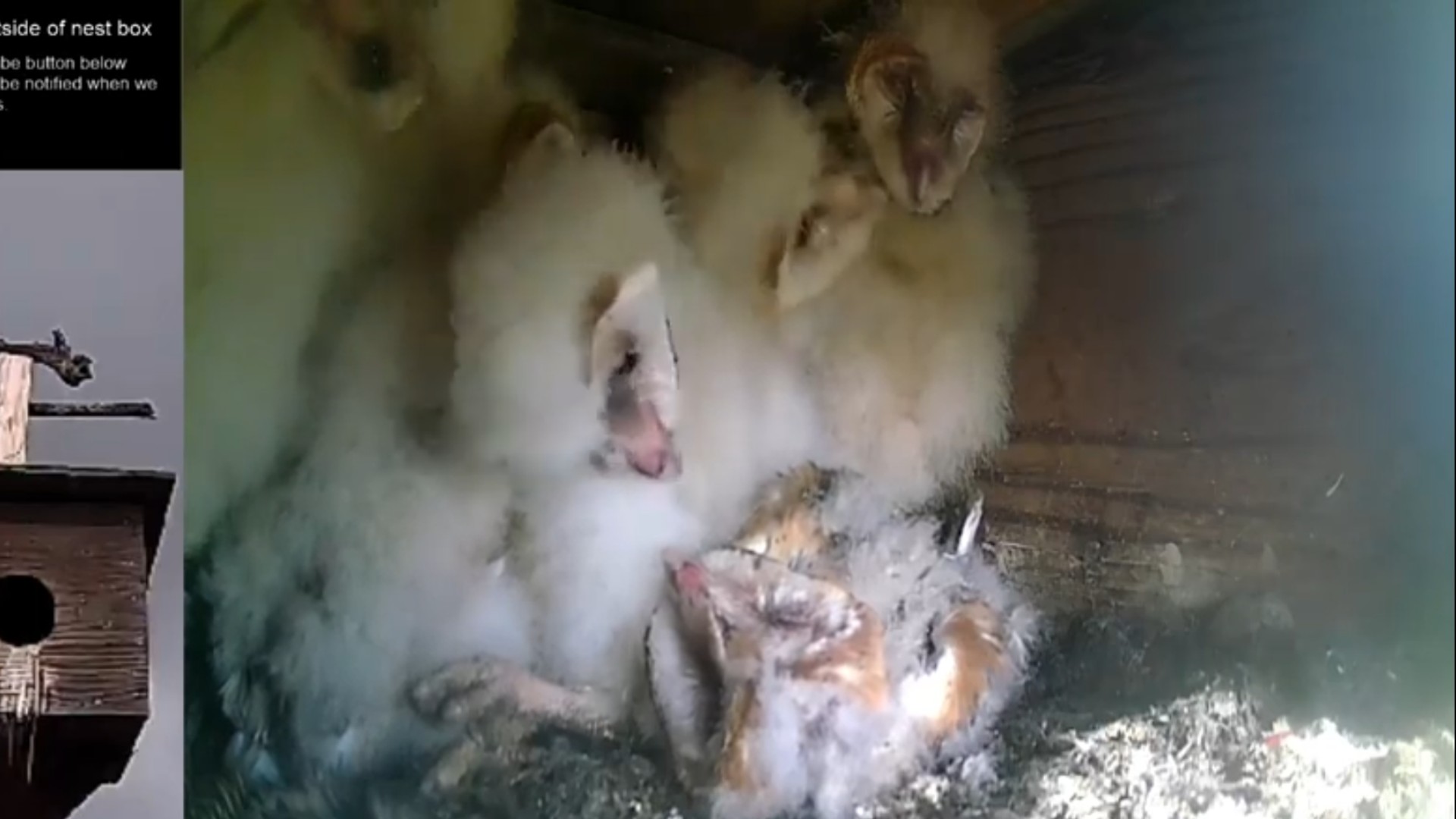Egg Clutches and Young Owlets
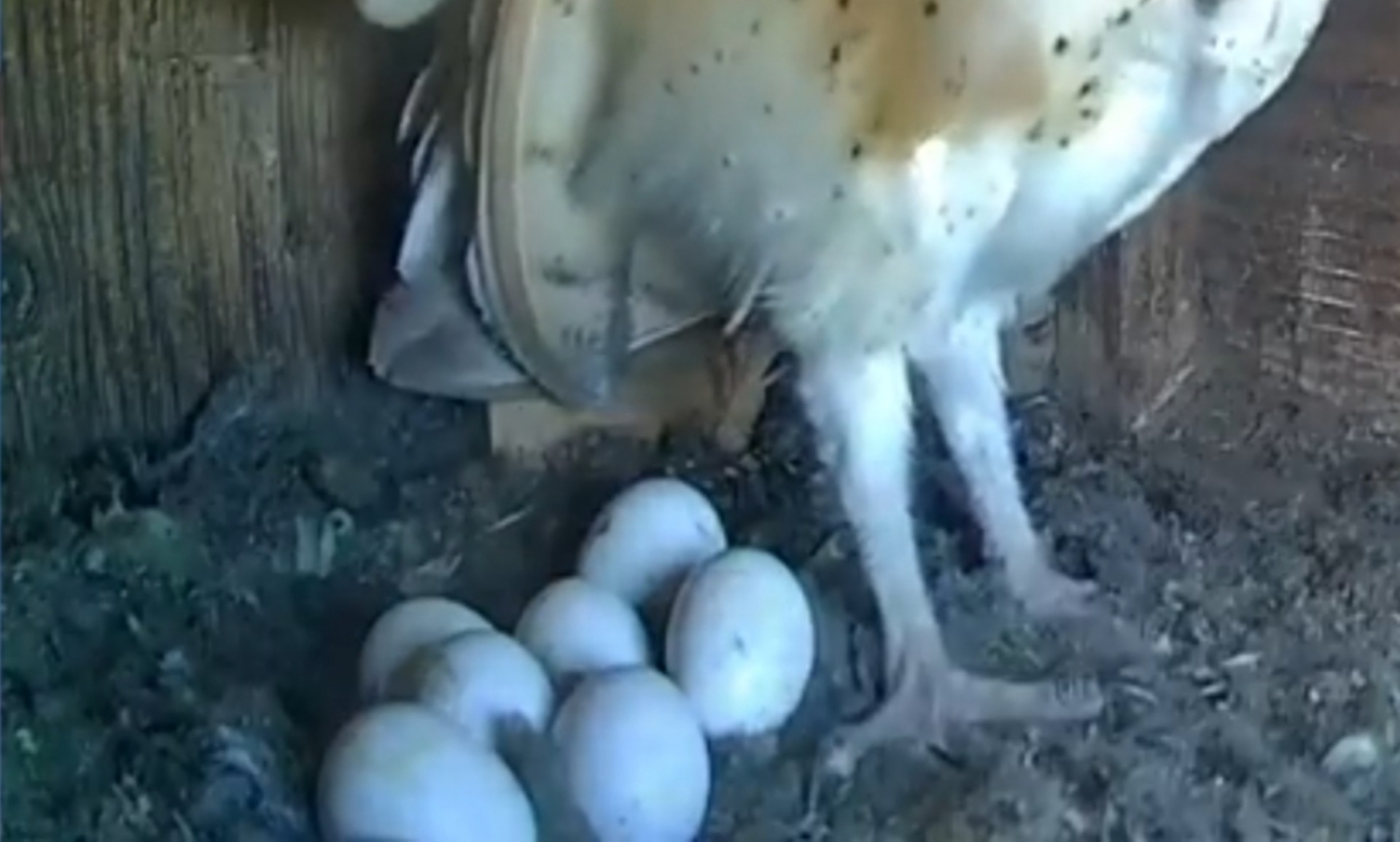
Seven Eggs in the Nest Box!
Egg Clutches:
Many other birds do not actually start their incubation until all their eggs are laid, and therefore, their eggs hatch at about the same time. With Barn Owls, however, incubation cycle is called “asynchronous”. What that means is that their incubation begins as soon as the first egg is laid. They will continue to lay eggs over a period of 8-21 days, usually every 2-3 days. The eggs will then hatch in the same order that they were laid. Unfortunately, because of all of this, younger babies have less of a chance to survive, especially if the food is scarce. Also, a summer clutch will tend to be smaller and have more fatalities.
The Barn Owl can lay up to about 7 eggs in one clutch. The eggs are white and relatively small. Clutches are typically larger if laid early in the year and smaller if laid later. It is, however, common for 1 or 2 eggs not to hatch at all. The average clutch is about 4 eggs. They have been known to have as many as three clutches although that is very rare. All the incubation is done by the female while the male provides the food needed for both the mom and the babies. This will go on until the owlets are about 3 weeks of age and are able to eat small prey whole.
Baby and Young Owlets:
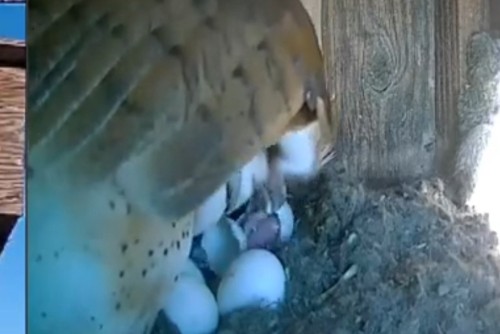 The owlets are hatched naked and need to be kept warm by mom until they develop the soft down that will enable them to keep warm on their own. Because of this, mom will consistently stay in the nest to provide the warmth and feeding they need during this vital time of growth.
The owlets are hatched naked and need to be kept warm by mom until they develop the soft down that will enable them to keep warm on their own. Because of this, mom will consistently stay in the nest to provide the warmth and feeding they need during this vital time of growth.
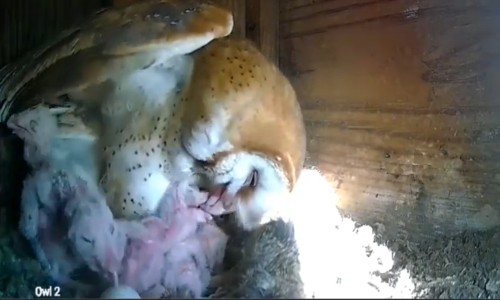 After the male brings in the food, the female will tear off small pieces for her young owlets, calling them to come and eat. Then, the babies find their way over to where she is feeding. She will steadily increase the amounts and size of the pieces she feeds them day by day until they are able to start eating small prey whole.
After the male brings in the food, the female will tear off small pieces for her young owlets, calling them to come and eat. Then, the babies find their way over to where she is feeding. She will steadily increase the amounts and size of the pieces she feeds them day by day until they are able to start eating small prey whole.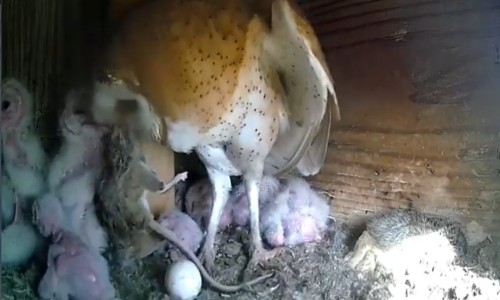 It is quite fascinating to observe the female with her owlets and how gentle she is with them and how watchful of them she is. As they get bigger and closer to being able to eat small animals whole, she watches them carefully to make sure they have just the right angle for them to eat it and ever so patiently, adjusts it when it’s not correct, teaching them the proper technique to accomplish this task. This happens at about 3 weeks of age and sometimes even sooner.
It is quite fascinating to observe the female with her owlets and how gentle she is with them and how watchful of them she is. As they get bigger and closer to being able to eat small animals whole, she watches them carefully to make sure they have just the right angle for them to eat it and ever so patiently, adjusts it when it’s not correct, teaching them the proper technique to accomplish this task. This happens at about 3 weeks of age and sometimes even sooner.
It’s amazing how the female’s internal clock seems to calculate this almost to the day. At that point, the female will then join in helping the male with the hunting to provide for the increased amount of food intake needed for these growing babies. At 3 weeks of age and once the owlets are able to eat their prey whole, they are typically able to eat on their own.
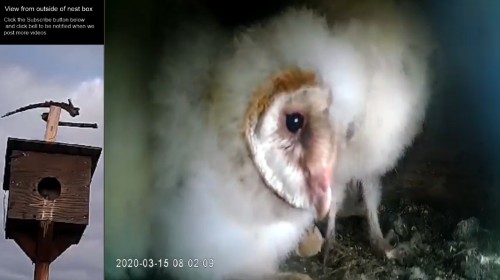 As the owlets get older, we start to see them able to do more and more. Watching them is so fun and entertaining! They move their heads in all different directions: up and down, back and forth, and upside down which is absolutely adorable. Their distinct heart-shaped facial disk and feathers start to appear and gradually their down disappears and they are fully feathered.
As the owlets get older, we start to see them able to do more and more. Watching them is so fun and entertaining! They move their heads in all different directions: up and down, back and forth, and upside down which is absolutely adorable. Their distinct heart-shaped facial disk and feathers start to appear and gradually their down disappears and they are fully feathered.
